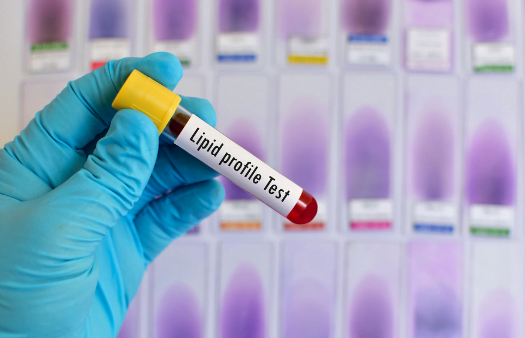Triglyceride Content Testing in Veterinary Food
The assessment of triglyceride content in veterinary food is a critical aspect of ensuring that pet foods meet nutritional standards and promote the health and well-being of animals. Triglycerides are essential fatty acids, which serve as an important energy source for pets. However, excessive levels of triglycerides can lead to obesity and other metabolic disorders, particularly in overweight or senior pets.
In this service, we employ a range of advanced analytical techniques to accurately determine the triglyceride content within pet food products. Our team utilizes state-of-the-art equipment such as gas chromatography (GC) and high-performance liquid chromatography (HPLC), which are well-suited for identifying and quantifying various components present in complex matrices like pet foods.
The process begins with thorough sample preparation, where we carefully extract triglycerides from the matrix using appropriate solvents. This step is crucial to ensure accurate results by minimizing interference from other compounds that might be present in the sample. Once extracted, these samples undergo rigorous analysis which provides precise measurements of triglyceride content.
Our expertise extends beyond mere measurement; it includes ensuring compliance with relevant international standards such as ISO 15686 and AOAC International methods. These guidelines provide robust frameworks for conducting accurate analyses across various sectors including food safety, nutrition science, and veterinary medicine. By adhering strictly to these protocols, we can guarantee reliable data that helps manufacturers maintain consistent product quality.
For our clients involved in research & development (R&D), we offer comprehensive services aimed at optimizing formulations while maintaining nutritional integrity. Our team works closely with R&D teams to identify optimal levels of triglyceride content based on specific dietary needs for different types of pets. This collaboration ensures that every batch produced meets not only regulatory requirements but also exceeds expectations set forth by pet owners who seek healthier options for their companions.
Our commitment goes beyond just testing; we provide detailed reports accompanied by recommendations aimed at improving formulations and enhancing overall product quality. These insights are invaluable tools for decision-makers within companies looking to stay ahead of market trends while ensuring they meet both legal obligations and customer preferences.
Quality and Reliability Assurance
To uphold the highest standards of accuracy, precision, and reliability in our triglyceride content testing services for veterinary food products, we have implemented stringent quality control measures throughout each stage of the analytical process. Our approach is rooted in continuous improvement practices that ensure every test result meets or exceeds industry expectations.
- Calibration: All instruments used are regularly calibrated using certified reference materials to maintain optimal performance.
- Data Validation: Results from multiple analyses on the same sample are cross-checked for consistency before finalizing reports.
- Auditing: Regular internal audits are conducted to verify compliance with established procedures and adherence to relevant standards.
We also provide certificates of analysis (COA) that document all aspects of our testing, including method details, sample identification numbers, results, and recommendations. These documents serve as critical evidence for regulatory bodies, customers seeking transparency about product composition, or researchers requiring reproducible data points.
International Acceptance and Recognition
The acceptance of our triglyceride content testing results across different markets is a testament to the rigor with which we conduct these analyses. Our laboratory adheres strictly to internationally recognized standards such as ISO 15686, AOAC International methods, and others relevant to food safety, nutrition science, and veterinary medicine.
By aligning our practices with these globally accepted norms, we ensure that the results from our tests are universally credible. This global recognition enhances trust among stakeholders including pet owners, veterinarians, regulatory authorities, and manufacturers operating in diverse geographical regions.
Use Cases and Application Examples
Data Table 1:
| Sample Type | Description | Triglyceride Content Range (%) |
|---|---|---|
| Dry Dog Food | A standard formulation aimed at providing balanced nutrition for adult dogs. | 2.5 - 4.0 |
| Canned Cat Food | Designed to meet the specific nutritional requirements of cats, rich in fats and proteins. | 3.0 - 6.0 |
| Premium Pet Treats | High-quality snacks designed for occasional consumption by pets. | 5.0 - 7.5 |
Data Table 2:
| Methodology | Description | Expected Accuracy (%) |
|---|---|---|
| Gas Chromatography (GC) | An efficient method for separating triglycerides based on their volatility. | ±0.5 |
| High-Performance Liquid Chromatography (HPLC) | A powerful technique used to analyze complex mixtures, especially useful in pet food testing. | ±1.0 |
List:
- Ensuring compliance with dietary recommendations for pets with special needs such as those suffering from diabetes or obesity.
- Determining appropriate triglyceride content levels in new product launches to meet market demands while maintaining health benefits.
- Monitoring production processes to maintain consistent quality across batches and ensure uniformity among products sold under different brands.





